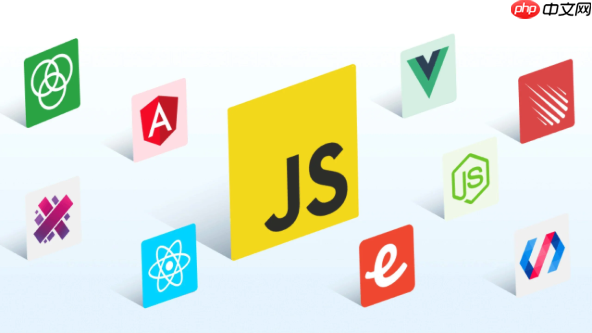Web Codecs API提供对浏览器底层音视频编解码器的直接访问,支持实时高效处理,其核心是通过VideoEncoder、VideoDecoder、AudioEncoder和AudioDecoder接口实现帧级操作;开发者需创建编解码器实例并配置参数(如codec类型、分辨率等),输入EncodedVideoChunk或VideoFrame进行编解码,通过output回调获取结果,并结合flush与close管理资源释放;相比传统方案,它具备低延迟、硬件加速、精细控制等优势,适用于云游戏、实时编辑等场景;实际开发中面临兼容性、性能瓶颈、内存管理等挑战,优化策略包括使用Web Workers避免主线程阻塞、利用transferable对象减少数据拷贝、合理配置编解码参数及及时释放帧资源;为确保稳定性,必须妥善处理error回调中的异常(如DecodingError、QuotaExceededError)、通过try-catch捕获configure错误、验证输入数据,并基于codec.state状态机控制流程,配合flush()和close()实现优雅关闭与重置。

Web Codecs API是浏览器中处理原始音频和视频流的强大工具,它让开发者能够直接访问底层的编解码器,实现实时、高效的媒体处理,比如自定义滤镜、转码、流媒体编辑等,极大地拓展了Web应用在音视频领域的可能性。
要用Web Codecs API处理原始音视频流,核心在于理解并运用其提供的
VideoEncoder
VideoDecoder
AudioEncoder
AudioDecoder
VideoFrame
AudioFrame
EncodedVideoChunk
EncodedAudioChunk
基本流程大致是这样的:
创建编解码器实例: 你需要根据你的需求,创建一个
VideoEncoder
VideoDecoder
AudioEncoder
AudioDecoder
output
error
// 示例:创建一个视频解码器
const videoDecoder = new VideoDecoder({
output: frame => {
// 解码成功,得到一个VideoFrame,可以绘制到canvas或进行后续处理
console.log('Decoded video frame:', frame);
// 记得在处理完后关闭帧,释放资源
frame.close();
},
error: err => {
// 解码过程中发生错误
console.error('Video decoder error:', err);
}
});配置编解码器: 在开始编解码之前,必须通过
configure()
'avc1.42001e'
'vp8'
description
// 示例:配置视频解码器
try {
videoDecoder.configure({
codec: 'avc1.42001e', // 常见的H.264 Baseline Profile
// codedWidth: 1280, // 对于解码器,这些通常可以从EncodedVideoChunk的描述中获取
// codedHeight: 720,
// 更多配置参数,如描述信息(SPS/PPS)
description: new Uint8Array([/* SPS/PPS data here */]),
optimizeForLatency: true // 优化低延迟
});
console.log('Video decoder configured successfully.');
} catch (e) {
console.error('Failed to configure video decoder:', e);
return;
}输入数据进行处理:
VideoFrame
AudioFrame
MediaStreamTrack
Canvas
ImageBitmap
encode()
EncodedVideoChunk
EncodedAudioChunk
decode()
// 示例:解码一个视频数据块
// 假设你从网络或文件获得了一个EncodedVideoChunk
const encodedChunk = new EncodedVideoChunk({
type: 'key', // 'key' for keyframe, 'delta' for non-keyframe
timestamp: 0, // 帧的时间戳,单位微秒
data: new Uint8Array([/* 编码后的视频数据 */])
});
if (videoDecoder.state === 'configured') {
videoDecoder.decode(encodedChunk);
} else {
console.warn('Decoder not configured, cannot decode.');
}处理输出结果: 在创建编解码器时定义的
output
VideoFrame
AudioFrame
EncodedVideoChunk
EncodedAudioChunk
VideoFrame
<canvas>
AudioFrame
AudioContext
EncodedVideoChunk
刷新与关闭:
flush()
close()
// 示例:完成所有解码后,刷新并关闭解码器 // await videoDecoder.flush(); // 等待所有解码完成 // videoDecoder.close();
在我看来,Web Codecs API的出现,真正把浏览器媒体处理的“黑箱”打开了一道缝,让我们开发者能更深入地去玩转音视频数据,这在以前是想都不敢想的。
与传统方式的差异:
<video>
<audio>
RTCRtpSender.track
Canvas
AudioContext
Web Codecs API的优势:
我个人觉得,Web Codecs API的出现,真正把媒体处理的“黑箱”打开了一道缝,让我们开发者能更深入地去玩转音视频数据,这在以前是想都不敢想的。它为Web平台带来了前所未有的媒体处理能力。
在实际开发中,Web Codecs API虽然强大,但也伴随着一些挑战,尤其是在追求高性能和稳定性时。我记得有一次,在处理一个实时的视频滤镜应用时,一开始没用Web Workers,结果界面卡得一塌糊涂,用户体验极差。后来把编解码逻辑都扔到Worker里,瞬间就流畅了。这种“痛点”体验,让你对性能优化有了更直观的理解。
常见挑战:
EncodedVideoChunk
VideoFrame
VideoFrame
AudioFrame
close()
性能优化策略:
configure
encode
decode
flush
transferable
VideoFrame
AudioFrame
EncodedVideoChunk
postMessage(data, [data])
transferable
VideoFrame
close()
VideoFrame
CanvasRenderingContext2D.drawImage
performance.now()
坦白说,刚开始用Web Codecs的时候,我最头疼的就是各种奇奇怪怪的错误,尤其是在尝试一些边缘配置时。后来才发现,细致的错误回调处理和严谨的状态机设计,是保证应用健壮性的基石。不然,一个小小的编解码失败,可能就会导致整个流中断,用户体验直接崩盘。
错误处理:
Web Codecs API通过其构造函数中的
error
注册error
VideoEncoder
VideoDecoder
AudioEncoder
AudioDecoder
error
DOMException
const videoDecoder = new VideoDecoder({
output: frame => { /* ... */ },
error: err => {
console.error('Web Codecs Error:', err.name, err.message);
// 根据错误类型进行不同的处理
if (err.name === 'EncodingError' || err.name === 'DecodingError') {
// 可能是数据损坏或编解码器内部错误,尝试重置或通知用户
console.warn('Media processing failed, attempting to reset decoder...');
resetDecoder(); // 自定义重置函数
} else if (err.name === 'QuotaExceededError') {
// 可能是资源不足,如内存或硬件编解码器队列已满
console.error('System resources exhausted, pausing input...');
pauseInput(); // 暂停输入数据
}
// 更多错误类型处理...
}
});configure()
configure()
try...catch
try {
videoDecoder.configure({
codec: 'unsupported.codec', // 故意设置一个不支持的
// ...
});
} catch (e) {
if (e.name === 'NotSupportedError') {
console.error('Codec configuration not supported:', e.message);
// 提示用户或回退到其他编解码器
} else {
console.error('Configuration error:', e);
}
}输入数据验证: 在将
EncodedVideoChunk
VideoFrame
状态管理:
Web Codecs API实例内部维护着一个状态,这个状态可以通过
codec.state
'unconfigured'
'configured'
'closed'
跟踪编解码器状态: 在你的应用逻辑中,应该始终知道编解码器的当前状态。只有在
'configured'
encode()
decode()
// 示例:在解码前检查状态
function processChunk(chunk) {
if (videoDecoder.state === 'configured') {
videoDecoder.decode(chunk);
} else {
console.warn('Decoder is not configured, chunk dropped.');
// 可以在这里缓冲数据,等待配置完成后再处理
}
}优雅地关闭和重置: 当不再需要编解码器或遇到严重错误需要重置时,应遵循以下步骤:
flush()
flush()
output
flush()
close()
flush()
close()
close()
configure()
async function resetDecoder() {
if (videoDecoder && videoDecoder.state !== 'closed') {
console.log('Flushing and closing decoder...');
try {
await videoDecoder.flush();
videoDecoder.close();
console.log('Decoder closed.');
} catch (e) {
console.error('Error during decoder flush/close:', e);
}
}
// 重新创建并配置解码器
// ...
}输入/输出队列管理: 编解码器通常有内部队列来缓冲输入和输出。在某些情况下,如果输入速度过快而处理速度跟不上,可能会导致队列溢出。你需要实现自己的输入队列管理逻辑,根据编解码器的处理能力来控制数据提交速率。例如,可以限制队列中待处理的
VideoFrame
EncodedVideoChunk
以上就是如何用Web Codecs API处理原始音频和视频流?的详细内容,更多请关注php中文网其它相关文章!

每个人都需要一台速度更快、更稳定的 PC。随着时间的推移,垃圾文件、旧注册表数据和不必要的后台进程会占用资源并降低性能。幸运的是,许多工具可以让 Windows 保持平稳运行。

Copyright 2014-2025 https://www.php.cn/ All Rights Reserved | php.cn | 湘ICP备2023035733号